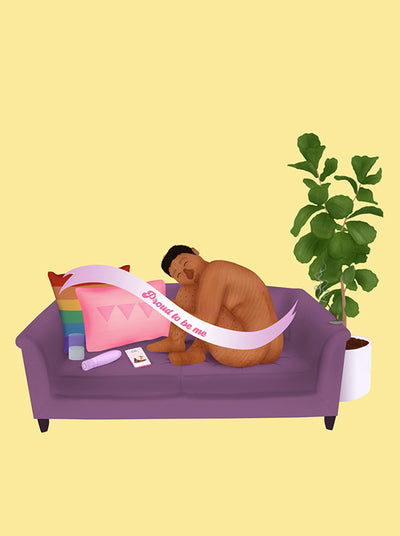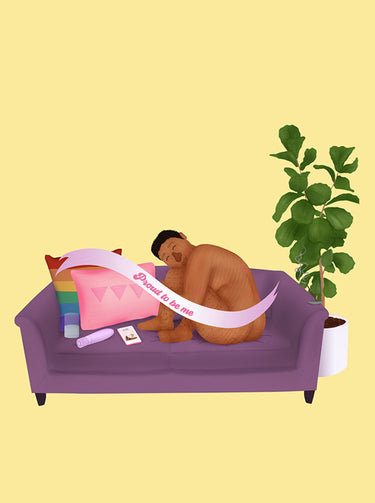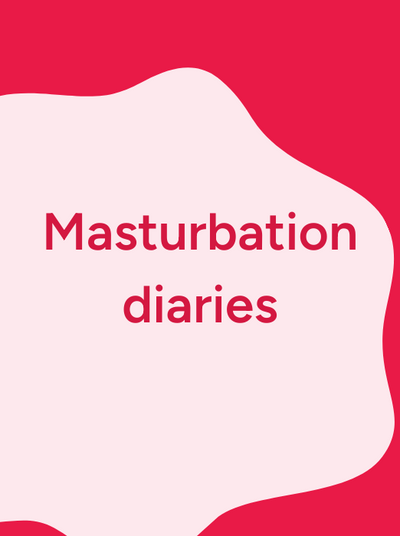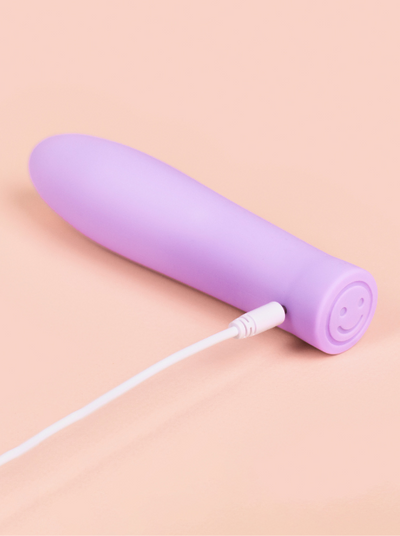More people than ever before are identifying as LGBTQIA+; making up a diverse, beautiful and proud community identifying as other than the heterosexual or cisgender norm.
It’s a community that is ever-changing, broadening and becoming even more inclusive, combatting erasure with a much more comprehensive alphabet. As the language evolves, as do the LGBT+ symbols that represent the rainbow of sexuality. Flags are not just a celebration of identity and diversity, but also an indication of safe spaces, togetherness, acceptance and allyship. This associated language and symbols, such as the rainbow flag, communicate, and affirm pride - the right to exist freely, without shame.
What does LGBTQIA+ mean?
This glossary of meanings is intended to help give an understanding of the acronym LGBTQIA+. The terms aren’t universal, and the most important thing to remember is that we define ourselves for ourselves, and respect how others define themselves too.
This list of terms is not definitive, is ever evolving, and interpreted differently by different communities and people. As the UC Davis’ LGBTQIA Resource Center says, ‘They are provided as a starting point for discussion and understanding’ - of ourselves, and others!
Lesbian
Usually, women who are primarily attracted to other women. Nonbinary people also identify as lesbians, as gender non-conformity doesn’t dismiss some people’s connection to womanhood, or attraction to women.
Gay
People who are attracted to those of the same gender as them. In the LGBT+ alphabet, gay usually represents men who are attracted to other men.
Bisexual
People of any gender, attracted to more than one gender.
Transgender
People whose gender identity or gender expression differs from the sex they were assigned at birth. Sexual attraction and orientation is not tied to this.
Queer
People who are anything but straight, or cisgendered. The term acknowledges that sexuality is a spectrum, but not everybody within the LGBTQIA+ community identifies as queer. It’s important to use the term respectfully, as it was once a slur that leaves some with mixed feelings. Language evolves, and many have reclaimed the word queer as a self-affirming, empowering umbrella term - but not everybody may feel comfortable having it as part of their lexicon.
Questioning
People taking time to explore their gender identity, expression or sexuality, so still discovering themselves.
Intersex
People whose sexual charateristics naturally do not fit the typical binary notions of biological male and female bodies. This umbrella term of variations could be due to chromosomes, gonads, hormones or genitals. Sexual attraction and orientation is not tied to this.
Asexual
People who don’t experience sexual attraction, or very little. There is a wide spectrum of asexuality, some people engage in sexual activity and others relate more to a romantic attraction. People can be asexual, and also gay, lesbian, bi etc.
+
The plus sign in the acronym represents all the other identities and orientations of the colorful spectrum of sexuality. There are so many ways beyond what is mentioned, and our language is forever changing too, as we progress in understanding the complexities - and joy - of affirming our own identity and sexual script!
+ Pansexual
People who are attracted to others without noticing gender.
+ Omnisexual
People who recognize the gender of the people they are attracted to, and are attracted to all genders.
+ Demisexual
People whose sexual attraction for someone comes from a strong emotional connection to them.
+ Sapiosexual
Those who primarily, or exclusively, finds intelligence sexually attractive rather than gender identity.
+Fluid
Sexual fluidity is for people whose sexual orientation or attraction can change over time, and depending on the situations at hand. Not to be confused with gender fluid; people whose gender identity or expression is not fixed.
LGBTQIA+ pride flags and their meaning
The rainbow flag is known for representing the LGBT+ community as a whole, but in fact there are 30 different flags, all symbolizing different sexual and gender identities within the community, as well as progression from the first ever flag in the seventies. Each flag design is joyful and meaningful in its own way, and created with purpose behind each pattern or color. There are flags that stand for the broader community, sexual orientation, gender and biological identity, as well as subcultures and fetishes. Here are just a few of the Pride flags, and what the colors of each represent…
1. The Rainbow Pride Flag (and its early iterations)

Community, sexual orientation and gender identity: The most traditional pride flag is known as the rainbow flag for all its colors. There have been a few iterations of this. The 1978 Gilbert Baker flag had eight colors, and included a hot pink that was dropped after an increase in Pride flags being manufactured made the pink material hard to come by. The same issue occurred with the turquoise color, so in 1979 the colors of LGBT flag went from seven to six.
- Pink (1978): Sex
- Red: Life
- Orange: Healing
- Yellow: Sunlight
- Green: Nature
- Turquoise (1978): Art
- Indigo: Serenity
- Violet: Spirit
2. Philadelphia Pride Flag

Community, sexual orientation and gender identity: This eight-striped pride flag represents LGBTQ+ people of color, to protest against the racism and lack of history for the community in mainstream gay rights movement. The addition of black and brown stripes at the top of the rainbow flag symbolizes people of color, and their experiences.
3. Transgender Pride Flag

Gender identity: The five striped, three-colored pride flag was designed to look the same no matter which way round it’s held, and is a symbol of for and in support of people who identify differently than how they were assigned at birth.
- Light blue: the traditional color for boys
- Light pink: the traditional color for girls
- White: those who are transitioning, have a neutral or no gender, or who are intersexed.
4. The Progress Pride Flag

Community, sexual orientation and gender identity: the latest design of rainbow pride flag celebrates the diversity of the LGBTQIA+ community, and calls for more inclusivity than ever before. The addition of the right-pointing chevron on the rainbow flag symbolizes progression and forward movement, and places discriminated minorities at the forefront. The colors within the chevron all stand for identity, whilst the colored stripes represent the values of the community as a whole.
- White, light blue and light pink: represent transgender, gender non-binary, intersex and the gender spectrum.
- Brown and black: represent people of color within the community.
- Black(double-meaning): represent those living with AIDs, and those who have been lost to the disease.
- Red: Life
- Orange: Healing
- Yellow: Sunlight
- Green: Nature
- Indigo: Serenity
- Violet: Spirit
5. Bisexual Pride Flag

Sexual orientation: This tri-color flag is a symbol for bisexuality, and reflects the idea that there is more than one color to sexuality.
- Pink: attraction to people of the same gender identity.
- Purple: attraction to more than one gender.
- Blue: attraction to people of a different gender identity.
6. Pansexual Pride Flag

Sexual orientation: This three-striped flag is a symbol for the pansexual community, and its differentiation from bisexuality. Its colors together represent the attraction to all genders (pan is latin for all).
- Pink: attraction to people who identify as women.
- Yellow: attraction to people who identify as non-binary.
- Blue: attraction to people who identify as men.
7. Asexual Pride Flag

Sexual orientation: The four-striped flag was designed by and for those who identify as asexual, to express the spectrum of asexuality.
- Black: no, or very little, sexual attraction.
- Gray: the gray area that is the spectrum between sexuality and asexuality, and attraction to people via strong emotional connection (demisexuality).
- White: non-asexual partners, and allies
- Purple: community
8. Lesbian Pride Flag (2018 version)

Sexual orientation: This pride flag has seven shades of orange, white, and pink for inclusive representation of different lesbian symbols and experiences.
- Dark orange: gender nonconformity
- Orange: independence
- Light orange: community
- White: unique relationships to womanhood
- Light pink: serenity and peace
- Pink: love and sex
- Dark pink: femininity
9. Intersex Pride Flag

Gender identity: This circle-centered pride flag symbolizes wholeness and completeness, and the right for intersex humans to be who and how they want to be. The colors chosen as they are often seen as gender neutral, thus not falling to constructs of binary identities.
10. Demisexual Pride Flag

Sexual orientation: The three stripes and one triangle on this pride flag represent one of many identities within the asexuality spectrum, demisexuality; those whose sexual attraction comes from a strong emotional connection with another person.
- Black: the umbrella of asexuality
- White: sexuality.
- Purple: community.
- Gray: attraction to people via strong emotional connection.
11. Non Binary Pride Flag

Gender identity: This four-coloured striped flag is a symbol for people whose gender identity is not the binary often assigned by society, man or woman. Non-binary people may identify with either male of female in some capacity, both, or neither at all.
- Yellow: whose gender is not binary.
- White: whose gender is more than one.
- Purple: whose gender is a mix of male and female.
- Black: whose gender is neutral, or free.
12. Genderqueer Pride Flag

Gender identity: The three horizontal stripes of this pride flag represents those whose gender identities are beyond the binary, and whose gender feels flexible or unfixed to them.
- Lavender: relating someway to the gender binary.
- White: gender neutrality.
- Green: outside of the gender binary
What is Pride?
Pride is the opposite of shame. Pride is a political movement. Pride is a celebration of the LGBTQ+ community, culture and journey. Our community associates Pride with equality, love, acceptance, and support. It can mean something different to each and every one of us, whether in the LGBTQIA+ community or allies. Pride can be a feeling, an education, an event…
also was gonna say something about a sentence maybe at the start of the last section saying although 'it is all this nice stuff, love, acceptance etc it's important to remember that pride is a protest before talking about stonewall etc' as a kind of nod away from rainbow capitalism
Pride as an event
Colorful, joyful parades and parties are often associated with Pride. But, it's important to remember that Pride is a protest foremost - a march for progress, and against the social injustices that remain a reality for many of the LGBTQIA+ community.
The Stonewall Inn on Christopher Street, NYC is where The Stonewall Riots started on 28th June 1969. Punters were regularly harassed by police looking to enforce America’s queerphobic laws. This particular night, punters fought back and triggered five days of riots in Manhattan. Legend has it that these punters included activists Marsha. P Johnson and Sylvia Rivera, two trans women of color, who had tirelessly organized the community to fight for their rights, for decades. This powerful point in history marked one of many steps and struggles the LGBTQ+ people have undertaken, and The Stonewall Riots are often seen as the tipping point for the modern LGBTQ+ rights and liberation movement.
International Pride month is in June for this reason, to honor not just the riots; but, the activism, hardwork and courage of the community and individuals to push for progress and change that takes time - in the past, present and future. Pride month marks past events, and also events to rally, gather, protest, celebrate, and parade.
Illustration by Pink Bits for Smile Makers.
References
https://lgbtqia.ucdavis.edu/educated/glossary
https://twitter.com/diabolicdyke
https://www.vam.ac.uk/articles/the-progress-pride-flag
https://time.com/6182859/bisexual-pride-flag-history/
https://www.amazon.co.uk/Queer-Up-Uplifting-Mental-Health/dp/1406399221










